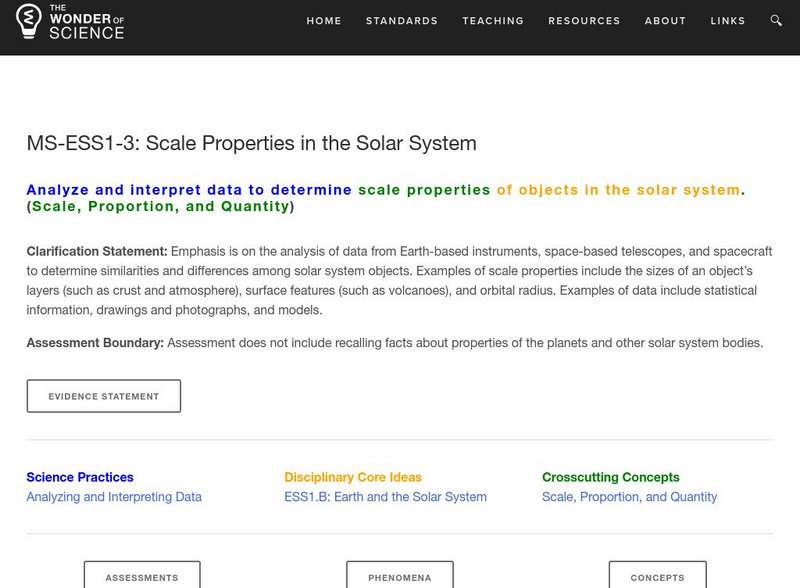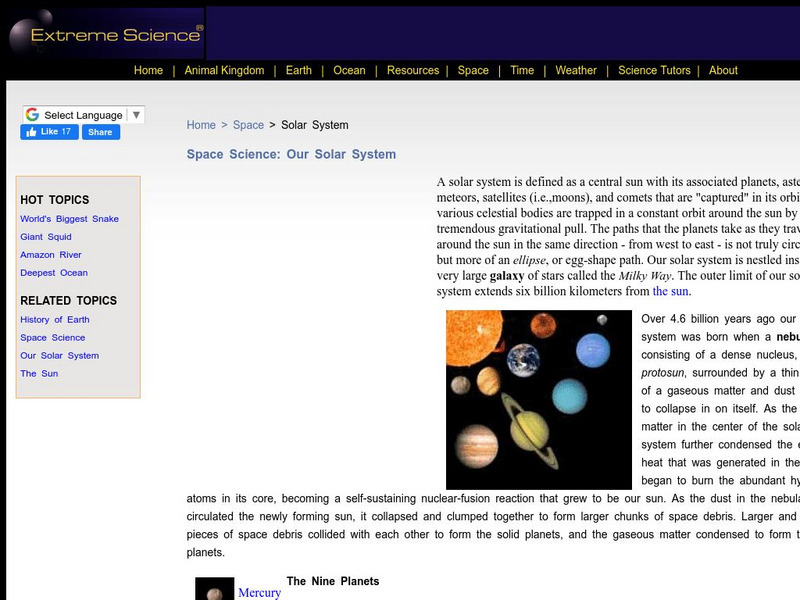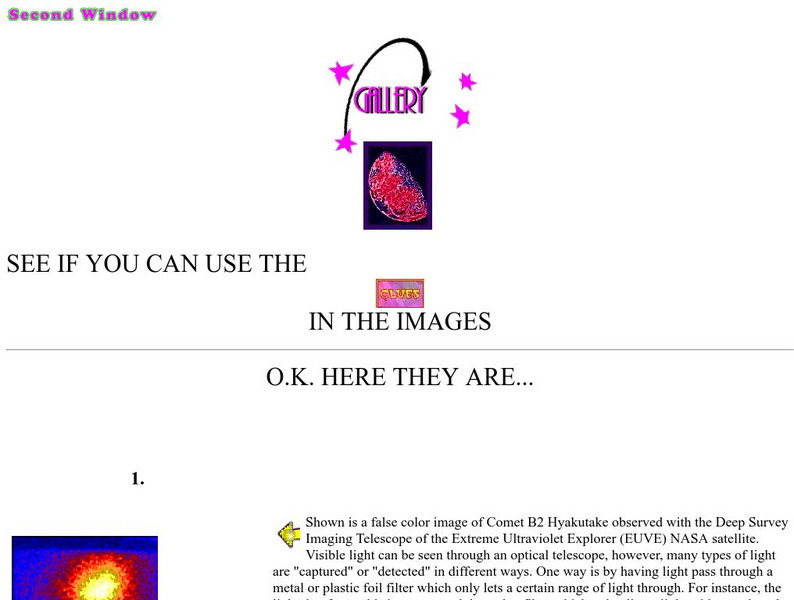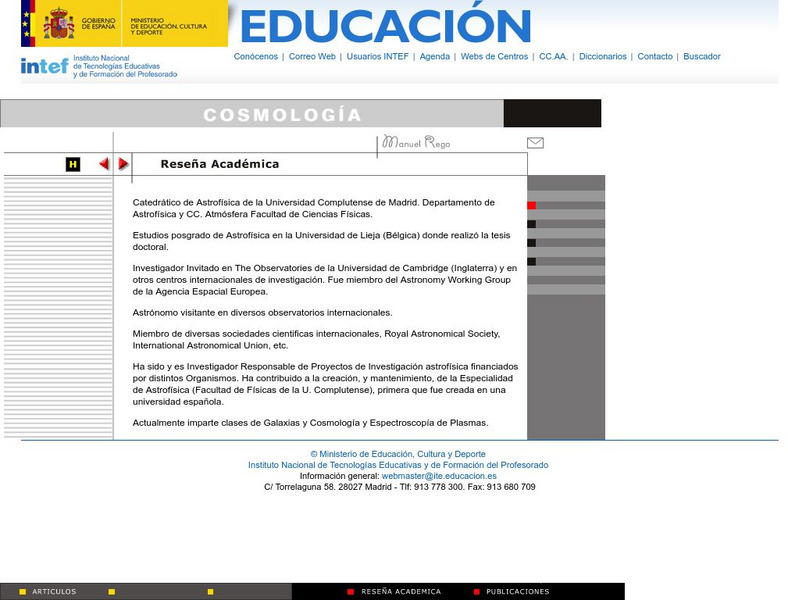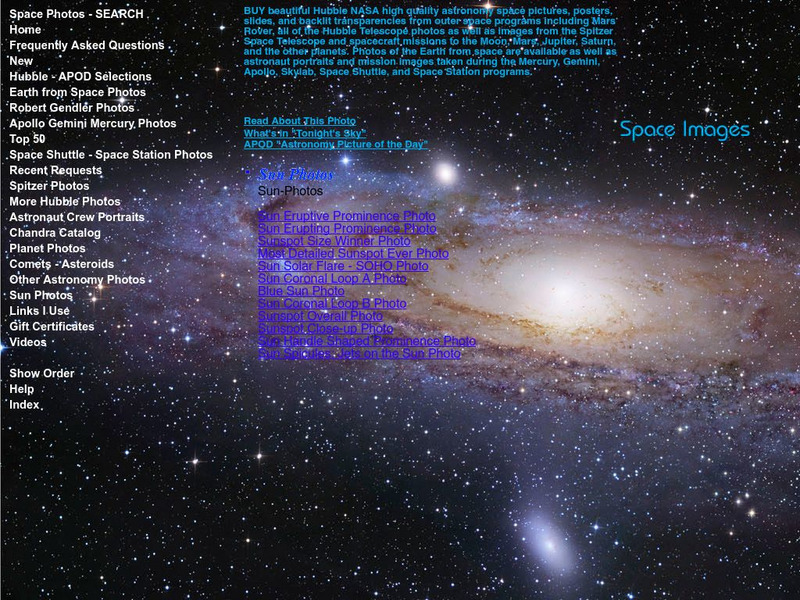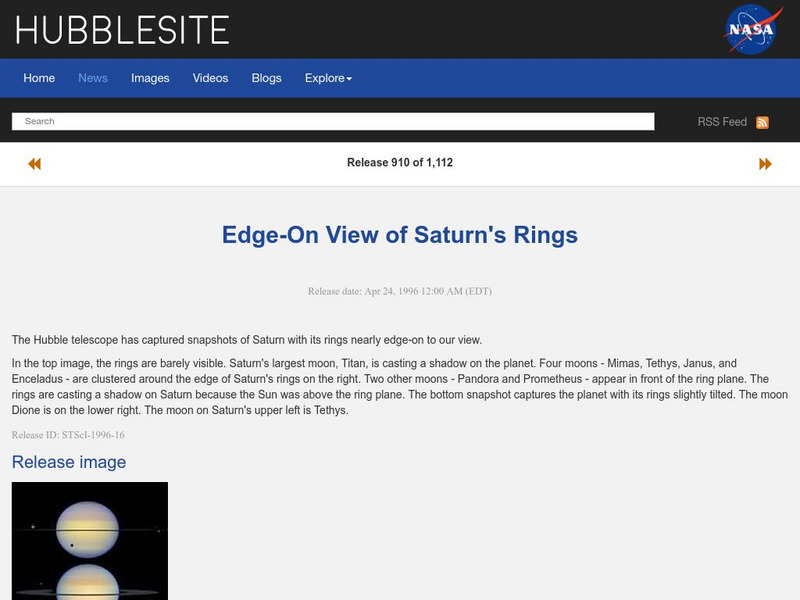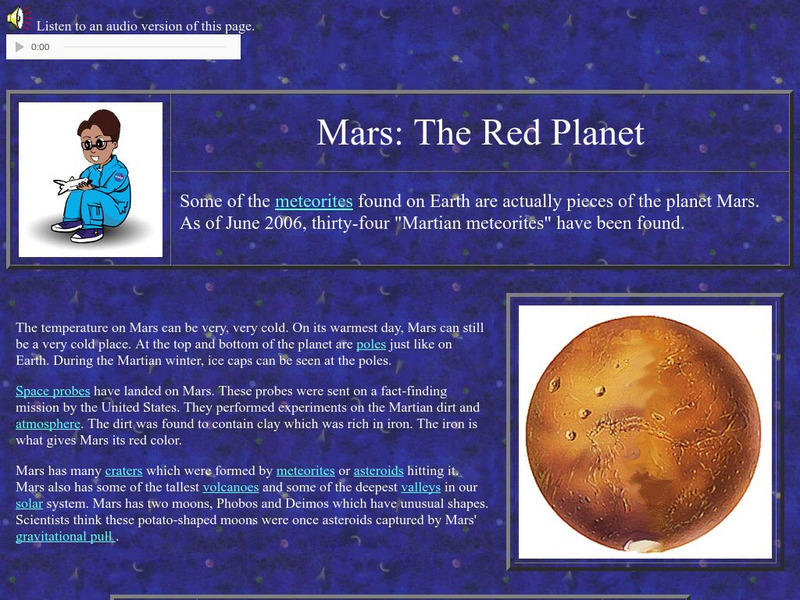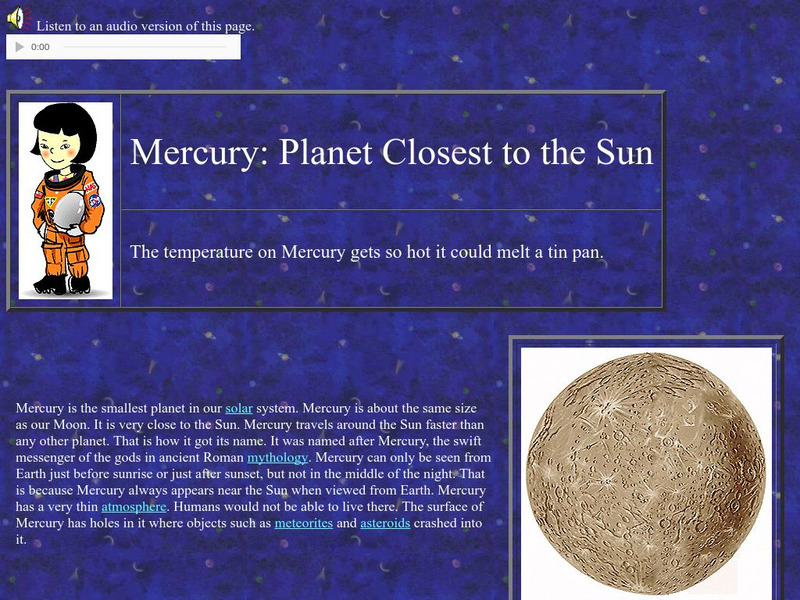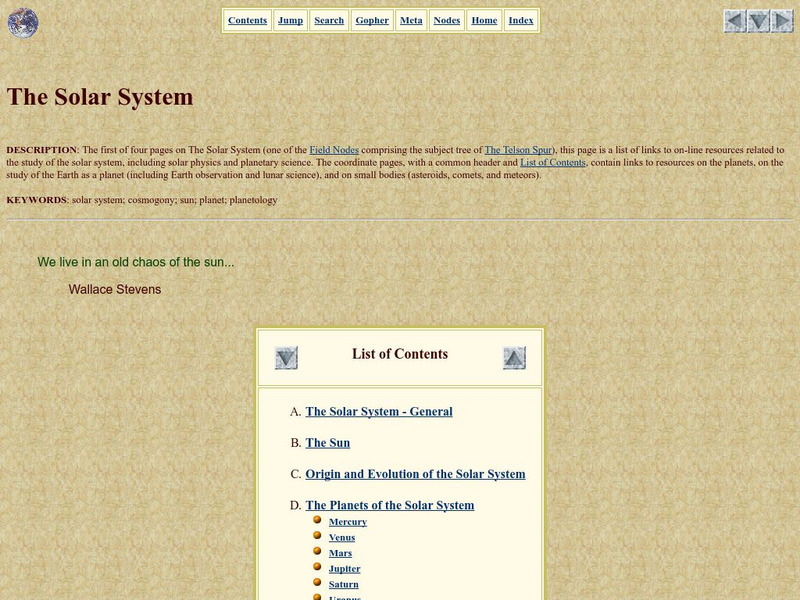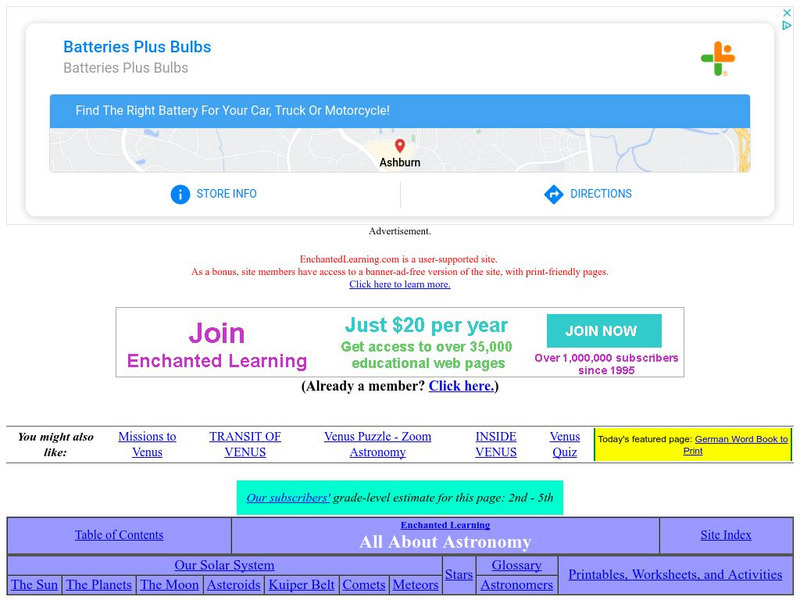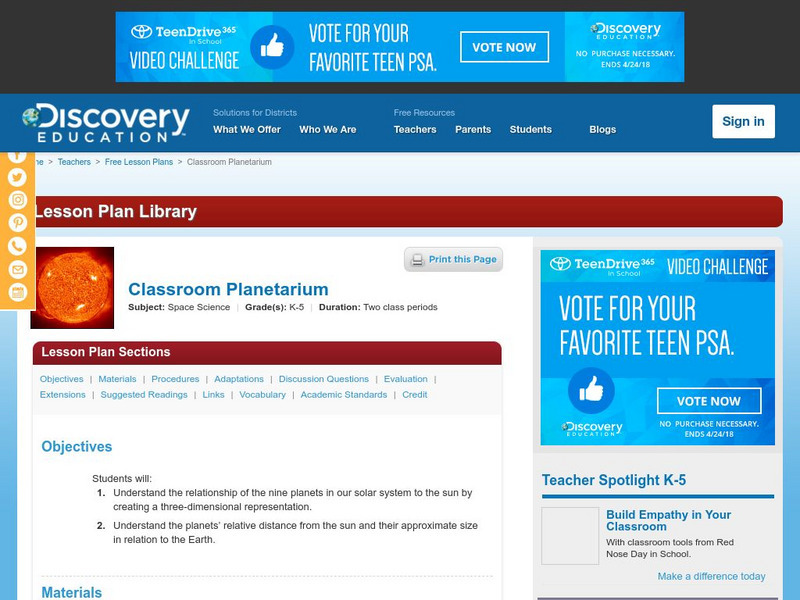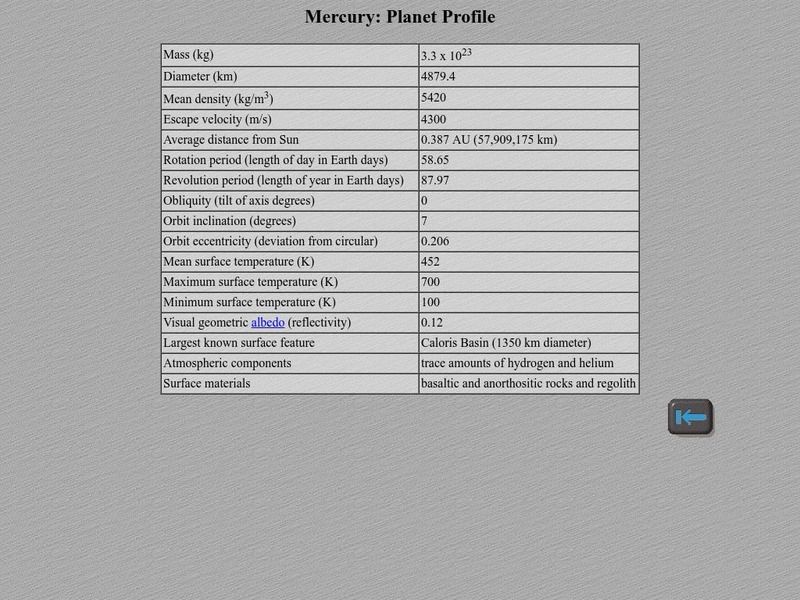Cool Math
Coolmath: Science Monster: Jupiter
A cool fact sheet about Jupiter including a place for students to enter their weight on Earth to convert it to what it would be on Jupiter.
The Wonder of Science
The Wonder of Science: Ms Ess1 3: Scale Properties in the Solar System
Work samples, phenomena, assessment templates, and videos that directly address standard MS-ESS1-3: scale properties in the solar system.
Cool Math
Coolmath: Science Monster: Mercury
A cool fact sheet about Mercury including a place for students to enter their weight on Earth to convert it to what it would be on Mercury.
NASA
Nasa: Our Solar System Overview
This site has links to all the planets, providing an overview of the solar system. It also contains information about asteroids, meteors, comets and other features of our solar system.
Other
Hong Kong Space Museum
Besides an introduction to exhibitions and events at the museum, the site provides a guide to stargazing, an astronomy FAQ, space news, virtual tours (see site map) and research resources (including Chinese-English star and constellation...
University of Texas at Austin
The University of Texas Mc Donald Observatory: Earth's Moon
Discover interesting facts about Earth's partner, the moon, which is more like a double planet than a planet and a moon.
Extreme Science
Extreme Science: Space Science: Our Solar System
Read about our solar system and its formation over 4.6 billion years ago. Find out about the planets, asteroids, meteors, satellites, and comets. More in-depth planet background can be accessed through links.
University of California
Center for Science Education: Gallery
A gallery of astronomy images which depict galaxies, comets, the moon, planets, nebulae, supernovae as seen in various regions of the electromagnetic spectrum. Each image in the gallery is described. Fascinating!
Ministerio de Educación (Spain)
Ministerio De Educacion: Cosmologia
This site has many articles from the first moments of life of the universe to its properties, current models, black holes, galaxies, etc.
Other
The Ptolemaic Model of the Planetary System
An easy-to-read description and history of Ptolemy's geocentric model of the universe. Geocentric means that Ptolemy believed the Earth was the center of the universe.
Other
Space Images
Discover brilliant, ominous images of our solar system from space exploration's cutting edge technology. Although this is a commercial site that sells these images, they are still educational and fun to look at.
NASA
Nasa: Astronomy Picture of the Day: Uranus's Moon Oberon
Brief overview of Oberon, the most distant and second largest moon of Uranus. Includes its discovery and also a few pictures. A NASA picture of the day.
ClassFlow
Class Flow: Pluto Redefined
[Free Registration/Login Required] This flipchart briefly describes the new definition of planet as determined by the International Astronomical Union.
Space Telescope Science Institute
Hubblesite: Edge on View of Saturn's Rings
This site is from Hubblesite provided by the National Aeronautics and Space Administration. This site provides NASA Hubble Space Telescope snapshots of Saturn with its rings barely visible. A good site to check out on the subject.
NASA
Nasa Star Child: Mars the Red Planet (Level 1)
Get to know your next door neighbor in space. An introduction to Mars, the Red Planet. Vocabulary words linked to glossary of terms. Printable version available.
NASA
Nasa Star Child: Mercury
Provides good information about Mercury and is a good starting point for information about the planet along with pictures and audio. Links to a simple fact table, puzzle, glossary, and more detailed information.
Other
The Telson Spur: The Solar System
This is a list of links to online resources related to the study of the planets. It has a literary theme associated with the Lewis Carrol poem "The Hunting of the Snark" with many quotes from literature and science. Navigation tools...
Cornell University
Cornell University: Astronomy: Orbital Motion and Kepler's Laws
At this site from the Astronomy Department of Cornell University, Kepler's three laws of planetary motion are stated. There are brief explanations of each, along with links to additional information on related subjects.
Ducksters
Ducksters: Astronomy for Kids: The Planet Earth
This site is astronomy for kids and teachers! Here students can learn about the planet Earth of the Solar System including fun facts, mass, day, year, and distance from the Sun.
Enchanted Learning
Enchanted Learning: All About Space: Venus
All About Space profiles the planet Venus with information about its size, mass, atmosphere, length of day, and the like. Features include interactive activities and learning exercises.
Discovery Education
Discovery Education: Classroom Planetarium
Create a classroom model of the solar system while teaching about relative size of all the planets, and each planet's distance from the sun.
NASA
Nasa: Mercury Planet Profile
This page from NASA provides a chart of statistical information on planet Mercury. Its mass, diameter, average temperature, and distance from the Sun are among the characteristics listed.
Curated OER
Nasa: Space Place: Solar System Comparative Sizes
This picture compares the sizes of the moons of the different planets in the solar system.



